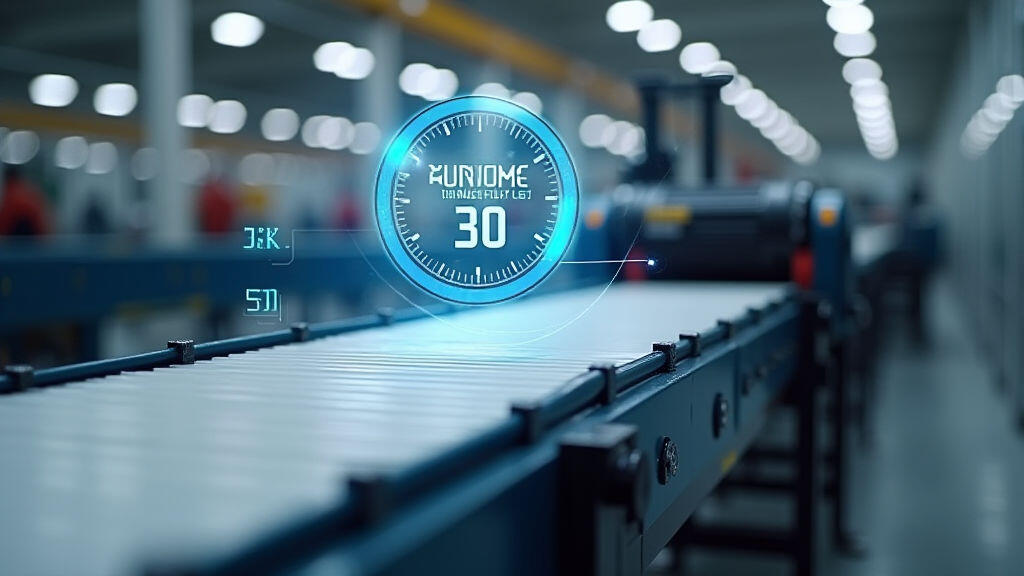
When a factory pulls the same heavy machinery into production, the cost of running it can rise faster than the price of raw materials. A surprising way to trim those operating bills is to revisit the gear motor that powers the equipment. With the right gear motor selection—ground in careful calculation—manufacturers can shave unnecessary power consumption, reduce wear‑and‑tear, and fashion a more reliable production line. This article walks through the practical steps of calculating gear motor requirements, shows how the right choice cuts costs, and predicts why this approach will become essential in the next wave of smart manufacturing.
A gear motor is the heart of any powered drive. It converts electric energy into mechanical rotation, then uses a gear set to tailor speed and torque to the machine’s needs. If the motor is oversized, the extra electromagnetic losses translate into higher electricity bills, extra heat that demands cooling, and premature insulation degradation. If it’s undersized, the machine may stall, cause aggressive gear wear, or need frequent maintenance—all adding hidden operating costs. A calibrated gear motor that matches the load precisely balances these risks.
You can see the calculation like a three‑step recipe:
Determine the Load Requirements – Start with the machine’s mechanical specifications. What load will it lift or move? What is the desired output speed (RPM), and how much torque does the application demand? Mechanical engineers typically provide a torque‑speed curve or a simple formula based on load weight and friction. For many conveyor belts or press systems, the data can be approximated with
[
T{\text{required}} = \frac{F \times r}{\eta{\text{mechanical}}}
]
where F is the resisting force, r is the contact radius, and ηmechanical is set at 0.9 for typical gearboxes.
Select the Motor (Pure Motor Step) – Once you have the target torque and speed at the gear output, work backward to the motor side. Gear ratio N is defined as
[
N = \frac{\omega{\text{motor}}}{\omega{\text{gearbox output}}}
]
so the motor’s speed becomes ωmotor = N × ωgear. A 3:1 reduction means the motor must run at three times the gearbox output speed. Use your chart of available motors to find one that offers at least 10% margin over the calculated torque at that speed, reducing the risk of motor overload.
Validate Efficiency and Power – Having chosen motor and gearbox, calculate the total power demand.
[
P{\text{total}} = \frac{T{\text{gearbox}} \times \omega{\text{gearbox}}}{\eta{\text{extraction}} \times \eta_{\text{gearbox}}}
]
Here ηtransmission (often 0.95) and gearbox efficiency (0.9–0.92) consume the most energy. A higher efficiency gear set, even if slightly more expensive, can lower the annual energy bill over the motor’s lifespan.
The jaw‑shaking part: selecting an optimal gear motor saves money in three concrete ways.
Energy Savings. A motor that perfectly matches the load operates at about 70–80 % efficiency. Oversizing pushes the motor into a lower efficiency band where the electrical losses climb sharply. On an operation that consumes 200 kW, a 10 % efficiency drop translates into an extra ~220 kWh per week, sterilizing a few hundred dollars in electricity every month.
Extended Component Life. When a motor is under stress, its bearings, insulation, and windings age faster. A gear motor that sits within the optimal load envelope often enjoys a 20–30 % increase in mean time between failures. Fewer downtime incidents mean fewer labor hours spent repairing stuck presses or cleaning over‑heated gear housings.
Reduced Maintenance and Warranty Claims. Gearboxes that see balanced torque distribution avoid the gear tooth wear that forces premature replacements. The cost of a unit replacement can eclipse the electricity saving if the gear motor is not chosen wisely. In a typical 5‑year lifecycle, a smart selection can reduce maintenance spend by roughly 15 %—a saving that, for a large plant, may hit millions.
Consider a roll‑forming bench that lifts steel panels. The panel weight is 150 kg, the lift radius is 0.45 m, and the required lifting speed is 0.5 m/s.
As Industry 5.0 encourages tighter digital twin integration and predictive maintenance, the gear motor becomes a data source rather than a black box. Modern gear motors embed sensors for temperature, vibration, and current draw. When paired with cloud analytics, a plant can anticipate wear before it happens, body the motor’s operating window, and fine‑tune energy usage in real time. The result? A leap from static efficiency to adaptive reliability, and a matching drop in total cost of ownership. As governments tighten energy regulations, manufacturers who adopt precisely calculated gear motors will not only meet compliance—they’ll set the benchmark for sustainable productivity.
Finding the sweet spot where a gear motor’s torque, speed, and efficiency meet a machine’s load requirement is a straightforward mathematical exercise with outsized returns. By methodically calculating the load, back‑calculating to the motor, and validating efficiency, manufacturers can greatly reduce energy consumption, increase service life, and lower maintenance costs. In an era where factories are becoming smarter, this calculation is not just a routine checkup; it’s a strategic lever that drives competitiveness, sustainability, and profitability. Embracing calculated gear motor selection today means being ready for tomorrow’s smart manufacturing demands—and that readiness is the real competitive edge.

Leave A Reply
Your email address will not be published. Required fiels are marked